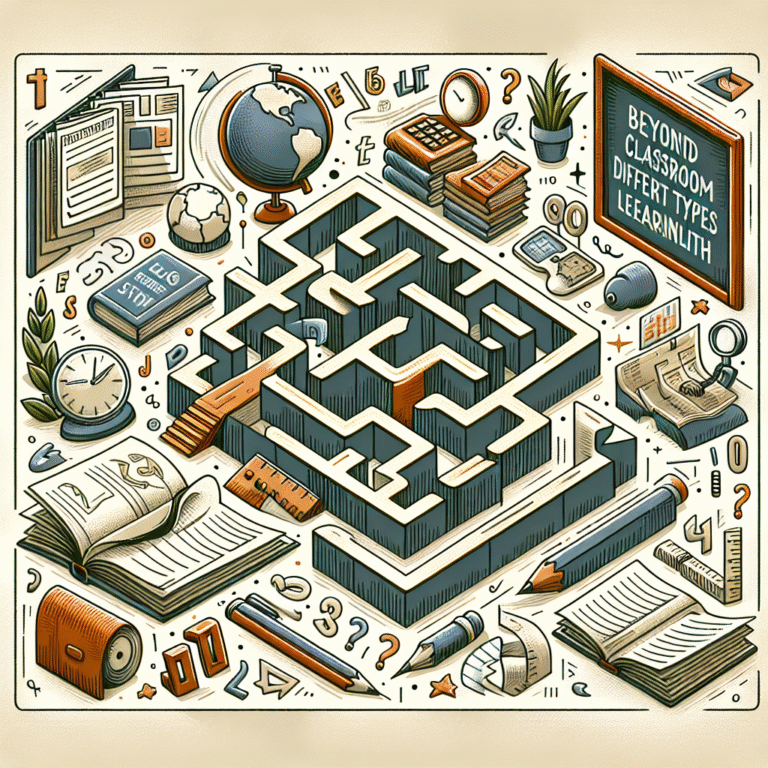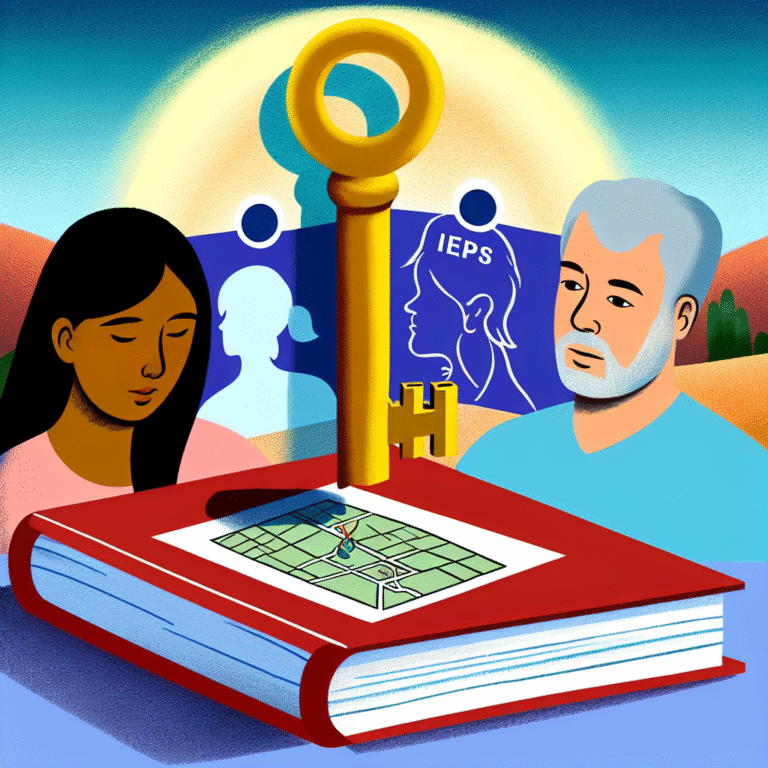
Empowering Success: Ultimate Time Management Strategies for Learners with Disabilities
Introduction
Time management is a critical skill that plays a significant role in the journey to academic and personal success, particularly for learners with disabilities. These learners often face unique challenges that make managing their time effectively more paramount than ever. Understanding these challenges and empowering learners with disabilities through effective time management strategies is not merely beneficial; it’s essential for enhancing their learning experiences and fostering independence.
In this comprehensive article, “Empowering Success: Time Management Strategies for Learners with Disabilities,” we will explore the unique needs of these learners and offer proven strategies tailored to help them overcome obstacles and achieve their goals.
Living in a fast-paced world where deadlines loom and schedules are tightly packed, mastering these strategies can serve as a transformative tool. So, let’s delve deeper into effective time management techniques that are specifically designed to empower success in learners with disabilities.
Understanding Challenges Faced by Learners with Disabilities
Before we dive into the strategies, it’s crucial to understand the various challenges faced by learners with disabilities. These challenges can manifest in multiple forms, including cognitive, emotional, and physical hurdles. Here are some common disabilities and their implications for time management:
| Disability | Description | Time Management Impact |
|---|---|---|
| ADHD (Attention Deficit Hyperactivity Disorder) | Challenges with attention, impulse control, and hyperactivity | Difficulty maintaining focus on tasks, often leading to time wastage. |
| Dyslexia | A learning disability affecting reading and language processing | Extended time needed for reading assignments, affecting completion times. |
| Autism Spectrum Disorder | Spectrum of neurodevelopmental variations | May struggle with time awareness and transitions between tasks. |
| Visual Impairment | Partial or complete loss of vision | Requires adaptive tools and techniques for task completion, affecting scheduling. |
| Hearing Impairment | Partial or complete loss of hearing | May struggle with group interactions and communication management, impacting their planning. |
Understanding these challenges is the first step toward developing strategies that empower success. By recognizing the individual needs of each learner, personalized approaches can be tailored to meet those specific requirements.
Empowering Success: Proven Time Management Strategies
1. Visual Scheduling
Visual schedules are powerful tools for learners with disabilities. Utilizing color-coded calendars or visual boards can help these learners visualize their daily tasks, appointments, and deadlines. Tools like digital apps or printable planners can be used to create a visual representation of time blocks.
Case Study: Emily, a high school junior with ADHD, struggled to adhere to her class schedule and often missed deadlines. With her counselor’s assistance, she created a color-coded planner that broke down her daily activities into visual blocks. This not only improved her time adherence but also reduced her anxiety around forgetting tasks.
Analysis: This case illustrates how visual learning strategies can reinforce time management skills, enabling students to see their time allocation more clearly.
2. Time Blocking
Time blocking is a strategy that involves dividing the day into distinct, planned intervals. Each block is allocated for specific tasks or subjects. This method helps learners focus on one task at a time, reducing the overwhelm that can come with a lengthy to-do list.
Tech Insight: Tools like Google Calendar or Asana allow users to create time blocks, send reminders, and sync across devices, making it easier to stay on track.
Case Study: Alex, a college student with dyslexia, often felt overwhelmed by his coursework. By implementing time blocking, he allocated specific times for reading, assignments, and breaks. He found himself completing tasks more efficiently and with improved comprehension.
Analysis: By allowing focus on one task at a time, time blocking helps learners manage their cognitive load more effectively.
3. Prioritizing Tasks with the Eisenhower Matrix
The Eisenhower Matrix is a decision-making tool that helps individuals prioritize tasks based on urgency and importance. Learners categorize tasks into four quadrants:
- Urgent and Important
- Important but Not Urgent
- Urgent but Not Important
- Neither Urgent nor Important
Using this method allows learners with disabilities to channel their energy into the right tasks while maintaining a balanced workload.
Case Study: Sarah, a student with visual impairment, often found herself overwhelmed. By applying the Eisenhower Matrix, she learned to differentiate tasks that needed immediate attention versus those that could be postponed. This strategy helped her reduce stress and improve workflow.
Analysis: The effectiveness of this strategy lies in its clarity, offering learners a straightforward approach to organize their responsibilities based on priority.
4. Setting SMART Goals
A powerful time management strategy involves setting SMART goals—Specific, Measurable, Achievable, Relevant, and Time-bound objectives. This approach provides a clear framework for planning and executing tasks.
Case Study: John was a graduate student with a hearing impairment. With his support team, he established SMART goals for his thesis project. By utilizing this framework, he could break down his work into manageable tasks, leading to timely progress and successful completion.
Analysis: SMART goals create accountability and clarity, essential for learners who may otherwise struggle to maintain focus or measure their progress toward goals.
5. Utilizing Technology
The integration of technology can significantly enhance time management skills. Numerous apps and tools can assist with reminders, organization, and productivity.
Tools to Consider:
- Todoist: A task management tool that helps prioritize daily activities.
- Evernote: An organizational tool to track notes, deadlines, and tasks.
- Pomodoro Timer apps: To break work into intervals, which can be beneficial for maintaining concentration.
Case Study: Mark, a student with autism, started using a Pomodoro app that allowed him to work in focused bursts. He found this not only helped in maintaining concentration but also gave him structure throughout his day.
Analysis: Harnessing technology empowers learners to manage their time effectively, enabling them to tailor their strategies to what works best for them.
6. Regular Breaks for Sustained Focus
Encouraging regular breaks can actually enhance productivity. Long periods of work without breaks can lead to burnout and decreased efficiency—especially in learners with specific disabilities. Implementing the Pomodoro Technique, which involves working for 25 minutes followed by a 5-minute break, can be particularly beneficial.
Case Study: Jessica, a high school student with a learning disability, adopted the Pomodoro Technique during her homework sessions. She noticed that taking short breaks helped her recharge and improve her focus when she returned to her task.
Analysis: This case exemplifies how structured breaks can lead to improved attention and the ability to tackle tasks more effectively.
7. Support Systems and Accountability
Creating a robust support system is essential for many learners with disabilities. This can consist of teachers, peers, or family members who can offer encouragement, remind them of deadlines, and help plan their schedules.
Case Study: Tom, an adult learner with ADHD, formed a study group with peers. This provided not only accountability but also a social aspect that made learning more enjoyable and less isolating.
Analysis: Building connections fosters a supportive environment where learners can thrive and feel empowered in their time management efforts.
8. Reflect and Adjust
Encouraging learners to reflect on their time management practices can lead to continuous improvement. Keeping a time management journal or log allows individuals to analyze what strategies work best for them and where they might need to make adjustments.
Case Study: Lila, a college student with a visual impairment, maintained a time management journal. By reflecting weekly on her progress, she learned to adapt her schedules and tackle problems proactively, leading to enhanced academic performance.
Analysis: Reflection promotes self-awareness, allowing learners to fine-tune their strategies for optimal success.
Conclusion
Time management is an essential skill that contributes directly to success, especially for learners with disabilities. By employing the strategies outlined in this article on “Empowering Success: Time Management Strategies for Learners with Disabilities,” individuals can discover tailored approaches that not only meet their unique needs but also pave the way for greater independence and confidence in their abilities.
The journey toward mastering time management may have ups and downs, but with commitment, support, and the right strategies in place, learners can indeed empower their success and achieve their goals.
FAQs
1. What are some common time management tools for learners with disabilities?
Some effective tools include digital calendars, task management apps, and specialized planners that cater to specific needs, such as visual or auditory options.
2. How can I support a learner with disabilities in improving their time management?
Offer encouragement and structure, help them design effective schedules, and assist in breaking tasks down to manageable portions.
3. Are there specific strategies for learners with ADHD?
Implementing visual schedules, time blocking, and the Pomodoro Technique can provide the structure and focus needed for learners with ADHD.
4. How important is regular reflection in time management?
Regular reflection allows learners to evaluate their strategies and make necessary adjustments, leading to continuous improvement and success.
5. Can technology really help enhance time management skills?
Yes! Utilizing apps can provide reminders, organization, and tools that help manage tasks effectively, making time management more manageable for learners with disabilities.
By embracing these empowering strategies, learners with disabilities can conquer time management challenges and unlock their fullest potential.






